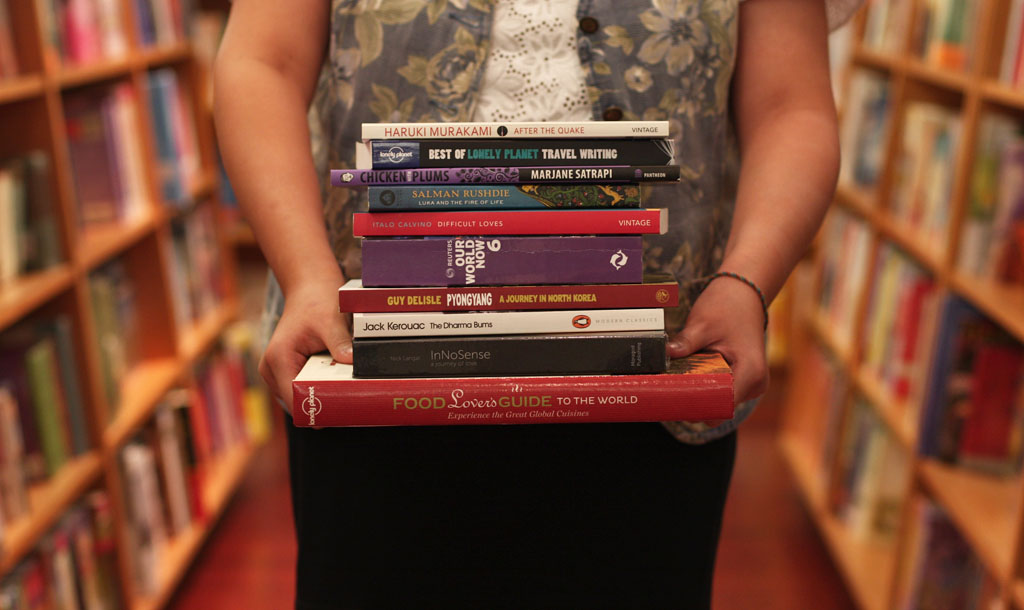
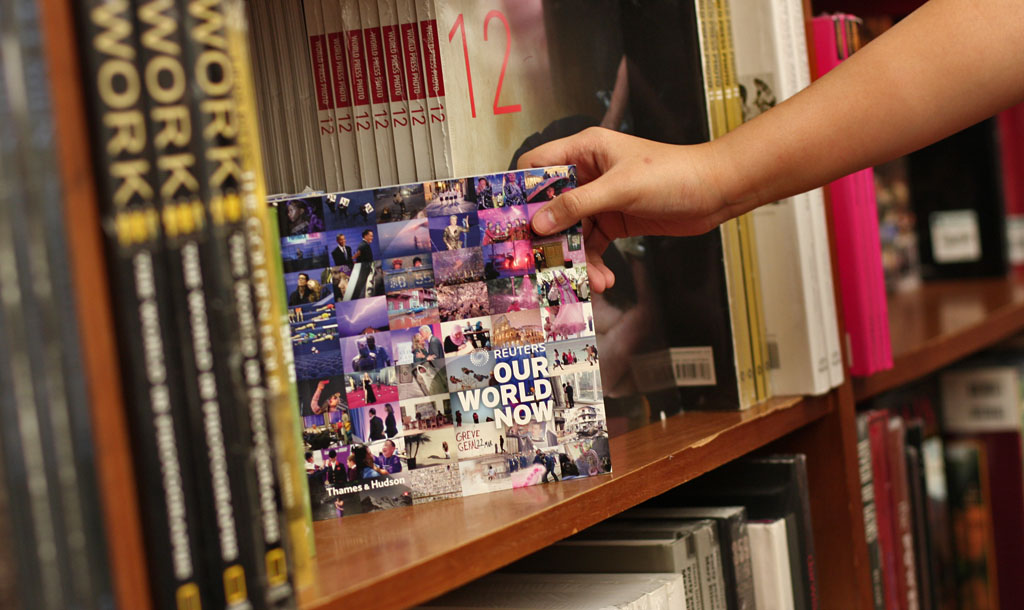
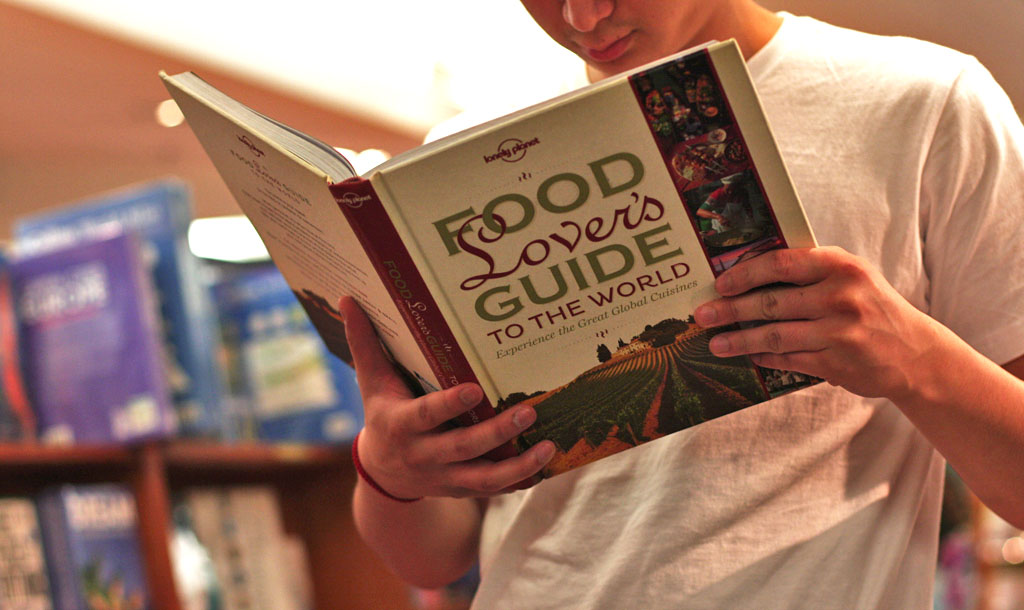

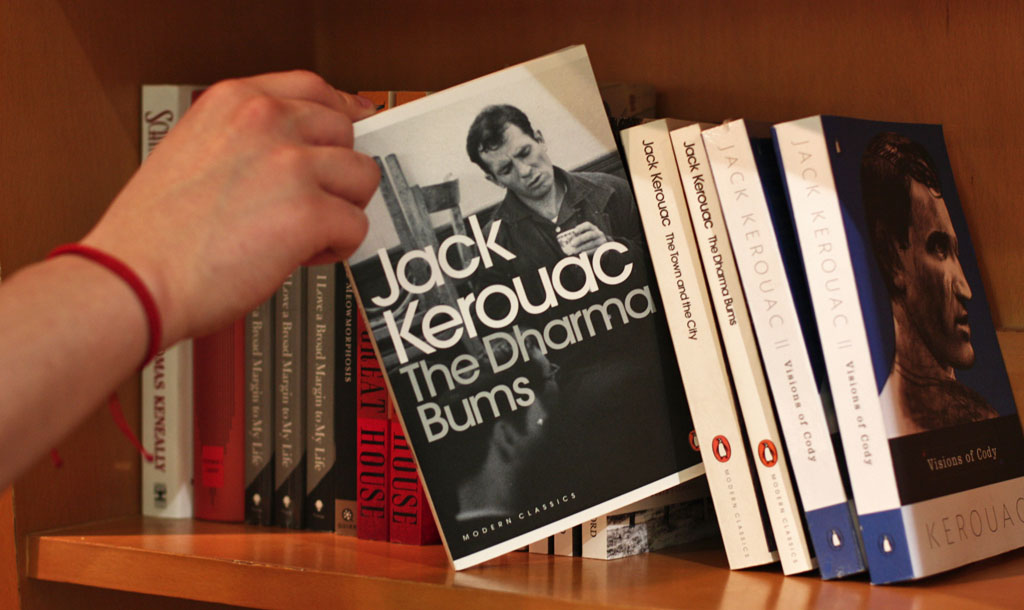

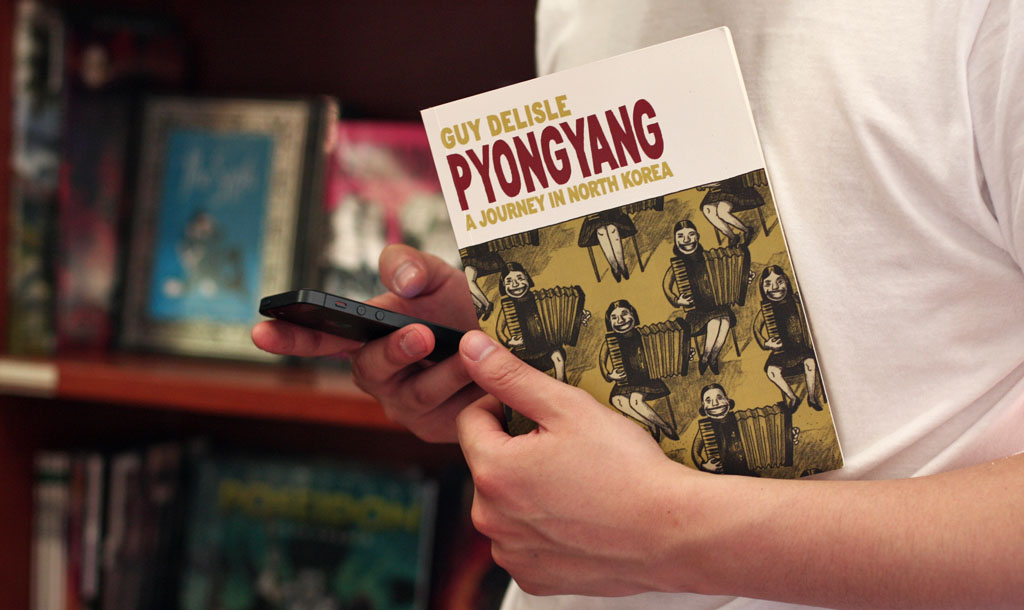

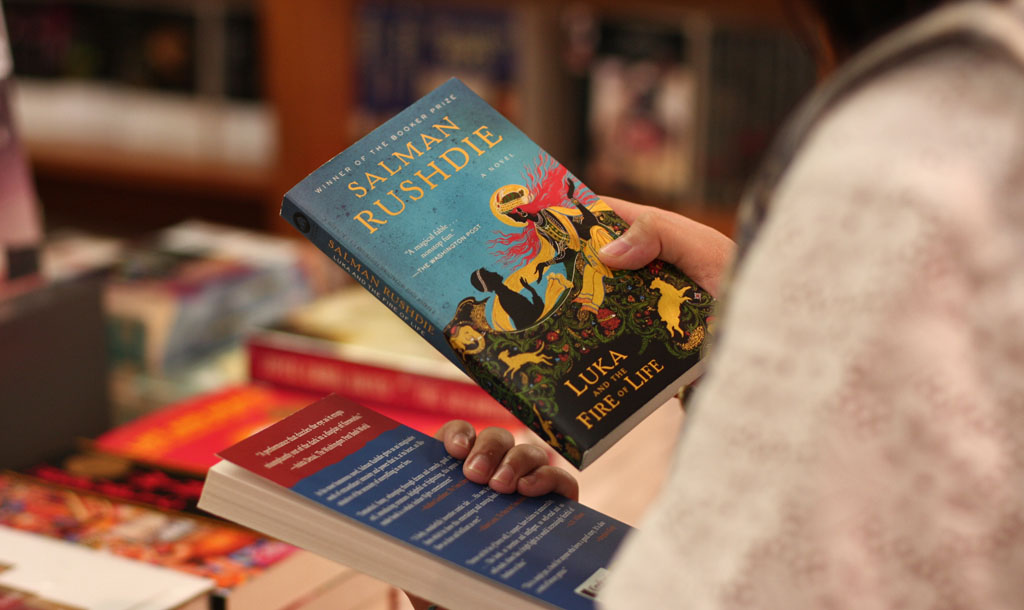
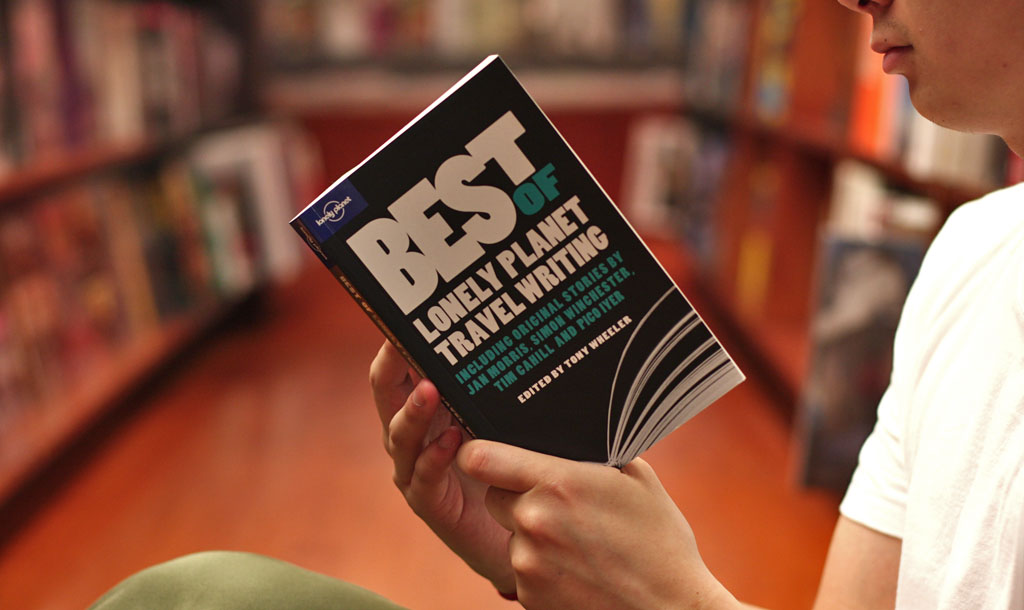

Reuters – Our World Now 6
By Reuters
Thames & Hudson
“A picture is worth a thousand words,” they say. But when it comes to photojournalism, the phrase no longer becomes a mere defense of the power of a single a image, but also emphasizes the need for a photograph to be worth a thousand, or even more, words. In the past, the primary job of photojournalists was to provide “illustrations” for writers in various publications. But many years later, photojournalism has evolved into a more independent art that allows photographers to say as much as they can with a single shot. Visual stories such as the 330 featured in the sixth volume of Reuter’s “Our World Now” series show the world’s realities in a way that written accounts cannot. Divided into 4 sections – each section consisting of three months – the book gives us a glimpse of life in corners of the world that we might never to visit.
Food Lover’s Guide to the World: Experience the Great Global Cuisines
Edited by Janet Austin, Helen Koehne and Samantha Trafford
Lonely Planet Publications
Food has been a central part of cultures all over the world for centuries, and it is no different today. Perhaps there are so many fast food chains that there are growing concerns regarding survival of local food cultures, but the tongue proves to be an oddly picky participant of globalization. People are so accustomed to certain flavours or methods of preparation that the best food is still the one that can be found at home. The preservation of the “native tongue,” so it turns out, is not only crucial for a person’s linguistic identity. This all means, of course, that each country has something unique to offer to those who want to step out of their comfort zone and get a taste of something different. After all, it is important to try new things in life. Lonely Planet’s “Food Lover’s Guide to the World” is full of delicious dishes from around the globe, complete with cultural tips, lists of recommended places, and recipes! It is a guaranteed treat for nomadic foodies!
“The Adventures of a Traveller” in Difficult Loves
By Italo Calvino
Vintage
We all travel for different reasons – work, curiosity, or sheer boredom – that it would be wrong to say that travelling only serves one single purpose. Of all the things that motivates an individual to go through the pains of travelling – the waiting, the exhaustion, the nauseating feeling of alienation – however, there is one that is probably one of the strongest motivations of all: love. This emotion, which Neil Gaiman considers to be “an impulse that will inspire and ruin in equal measure,” has driven humans into the realms of insanity for one too many times – not excluding the insanity of travelling long distances just to fulfill the heart’s desires. “The Adventures of a Traveller,” which is one from 11 adventures in Calvino’s brilliant short story compilation, tells the tale of Federico, a man who, during the course of his journey to meet his beloved, Cinzia, finds himself constantly struggling with the mixed feelings of desperately wanting to be elsewhere while simultaneously craving for the comfort of his own home.
The Dharma Bums
By Jack Kerouac
Penguin
It is impossible to deny the success of Jack Kerouac’s “On the Road” – a book that continues to inspire the young and restless until this very day. A groundbreaking piece though it is, “On the Road” is not Kerouac’s only notable literary product. Equally bursting with energy – though of a different kind – is “The Dharma Bums.” It tells the story of Ray Smith’s fascination with Buddhism, and how he wants to look for dharma or “truth.” Ray’s interest and curiosity in the Buddhist philosophy, and his understanding of the religion’s practices are largely influenced by Japhy Ryder, a charismatic man he encounters at a poetry reading. This story is a great example of how spiritualism can encourage people to travel to certain places that, given other circumstances, they would most likely not even consider visiting. The story is also an interesting look into how the belief system and way of a life of a particular group of people can change – or worse, get completely distorted and stripped off of its significance – when absorbed by another society.
“Thailand” in After the Quake
By Haruki Murakami
Vintage
Haruki Murakami’s most popular stories rarely go beyond the borders of Japan and Japanese culture (or heavily “Japanized” versions of Western culture). In “Thailand,” however, Japan’s greatest contemporary novelist surprises readers by introducing a Japanese woman named Satsuki who travels to the exotic country of Thailand. Though the general theme of the anthology itself is the devastating Kobe earthquake, and not travelling per se, this short story is worth reading using the eyes and mind of a traveller. Satsuki, whose initial purpose of going to Thailand was to attend a conference, ended up immersing herself in a spiritual journey. Her mysterious and sage-like chauffer, Nimit, awakens a part of her that she was not previously aware of. The story, though very brief, manages to cover the complicated nature of foreignness and loss, as well as the even more difficult matters of the past and hazy, yet somewhat foreseeable, future. Fans of Murakami ought to read this story that clearly covers the shifting state of mind that happens when a person is taken out of his or her familiar environment, and put in a completely new one.
Pyongyang: A Journey in North Korea
By Guy Delisle
Jonathan Cape
When Guy Delisle was sent to North Korea’s capital, Pyongyang, he did not expect the city to be so similar to the dystopian world depicted in George Orwell’s dark novel, “1984.” He stayed there for two months, which might not feel like such a long time in other parts of the world, and spent most of his days working on an animation. While trying to wrap his head around the bleakness of a totalitarian state, as well as the cultural and ideological tensions he experiences during his stay, he records his daily observations – the ones that eventually gave him enough material to produce this eye-opening graphic novel. For the most part, “Pyongyang: A Journey in North Korea” is a reflection of Delisle’s wit, but amid the endless jokes are also important details concerning this one Hermit Kingdom that we might not be able to learn from other sources.
Chicken with Plums
By Marjane Satrapi
Pantheon Books
The past often presents itself as a distant, and at times frightening, part of our existence. We do not always find good things when we look back, but the present always finds something – anything – that reminds us of earlier days. All of us are time travellers – maybe not in the manner H.G. Wells had imagined in his book “The Time Machine,” but we do, in fact, travel through time. Every day, we meander through our memories, hoping to find a place in our consciousness that we can wholeheartedly accept and be accepted in return. Unfortunately, not every one can be lucky enough to find that ideal spot – not even the main character of Satrapi’s “Chicken with Plums,” Nasser Ali Khan. After failing to find a replacement for his beloved tar, the one that his wife broke as the result of a heated argument, Nasser Ali decides to retreat to his room and wait for Death. During his slow, and painful suicide, his mind takes him on a trip to the past – including the time when he was still learning how to play the tar and the day he met the true love of his life. This is a heartbreaking story of an artist who lost the tool he needs to express his feelings, and how that loss forced him to go on the saddest journey he will ever know.
Luka and the Fire of Life
By Salman Rushdie
Random House
Though Salman Rushdie is widely known for his controversial masterpiece, “The Satanic Verses” – the book that left him no choice but to spend a large part of his life in hiding – he has produced volumes of powerful stories that serve to confirm his literary prowess. “Luka and the Fire of Life” is about a boy named Luka, the much younger brother of Haroun – a character from Rushdie’s “Haroun and the Sea of Stories” – who desperately wants to save his father. The boys’ father, Rashid Khalifa, is a legendary storyteller whose talent makes all those around him more joyful and appreciative towards the magical wonders of life. So when Rashid suddenly falls into an abnormally deep sleep, Luka feels responsible to go on a quest to find ways to wake him out of his slumber. Told in Rushdie’s signature rhythmic prose, this story is one that feeds the imagination.
Best of Lonely Planet Travel Writing
Edited by Tony Wheeler
Lonely Planet Publications
Editor Tony Wheeler begins the introduction to “Best of Lonely Planet Travel Writing,” by writing, “Your own experience and someone else’s – travel needs both.” The act of travelling is an attempt at educating yourself, even if you think that you are only travelling for pleasure. But not all of us have the sources – whether it is time, money, or patience – to pack our bags and hit the road. And even those of us who do have them can only get so much travelling done in a lifetime. This brings us back to Wheeler’s statement – that is, the fact that we need to use each other as proxies to all those unattainable adventures. Lonely Planet Publications aims to expose the curious among us to the experiences of frequent travellers in this collection that features the best essays from earlier anthologies such as “Lonely Planet Unpacked” and “Brief Encounters.”
InNoSense: A Journey of Love
By Nick Langat
Moragod Publishing
More than three decades ago, Roland Barthes wrote “Camera Lucida,” a simultaneously enlightening and morbid book about photography. A photograph of his late mother becomes the main discussion of the book, and it raises many notions on how a visual document helps people to remember each other, even those who have passed away. The photograph itself is, in a way, a sort of “life after death” because if others continue to look at it long after a person’s passing, the memory of him or her will continue to live. Nick Langat’s touching book that features 241 photos taken in 48 countries, complete with heart-wrenching poems on the mysterious ways of life and death, along with the love that blossoms and withers in between, is an example of Barthes’ idea. It is a tribute to the memories of Langat’s friends, Christian and Thaworn. As we go through the pages of the book, however, we learn that not much is actually told of either of the two, and that perhaps, the understanding of identities do not matter as much as the will to make those identities exist in a form others can appreciate as an art.











